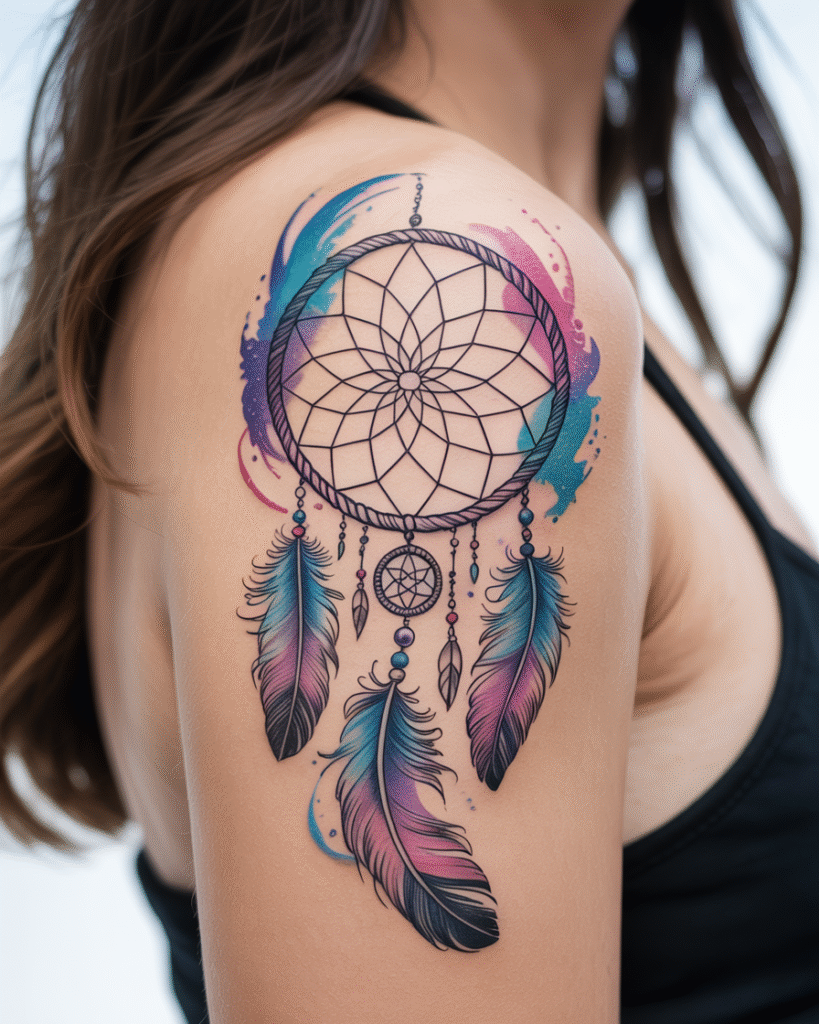The fusion of traditional dreamcatcher symbolism with contemporary watercolor tattoo techniques has created one of the most stunning and sought-after styles in modern tattooing. These pieces blend the protective spiritual meaning of dreamcatchers with the fluid, artistic beauty of watercolor painting, resulting in tattoos that are both deeply meaningful and visually captivating.
The Evolution of Dreamcatcher Tattoos
Dreamcatcher tattoos have long been popular for their rich cultural significance and beautiful visual appeal. Traditionally, dreamcatchers were handwoven talismans believed to filter out negative dreams while allowing positive ones to pass through. In tattoo form, they represent protection, guidance, and the filtering of life’s experiences – keeping the good while releasing the bad.
The addition of watercolor techniques to dreamcatcher designs has revolutionized this classic tattoo style. The organic flow of watercolor paints mirrors the natural movement of feathers and the ethereal quality of dreams themselves, creating a perfect artistic marriage between technique and meaning.
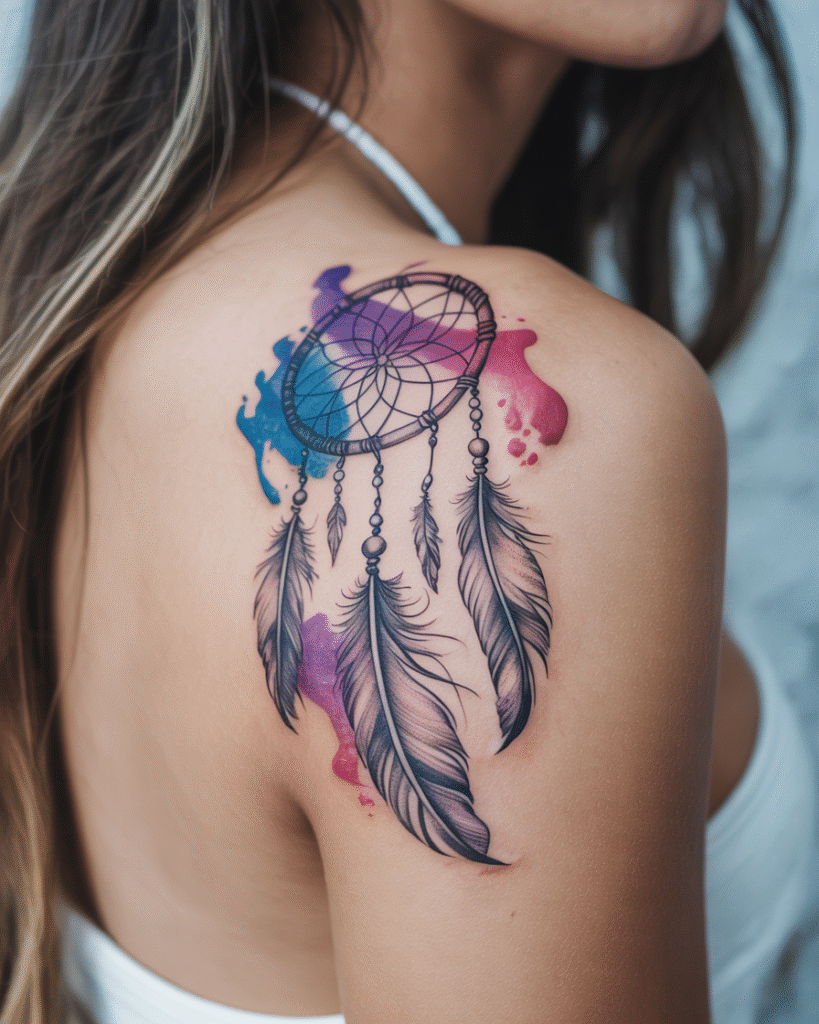
Mastering the Watercolor Technique
Watercolor tattoos require exceptional skill and a deep understanding of how ink behaves on skin. Unlike traditional tattoo styles that rely on bold outlines and solid colors, watercolor techniques emphasize:
Color Blending: The seamless transition between blues, purples, and pinks creates that signature watercolor effect. Artists must master the timing and saturation levels to achieve smooth gradients that won’t muddy or fade poorly over time.
Splash Effects: The organic splashes and drips that characterize watercolor work require precise control to look naturally random. Each splash is carefully planned to complement the overall composition while maintaining that spontaneous paint-on-canvas appearance.
Layering: Building up translucent layers of color creates depth and luminosity that makes the colors appear to glow from within the skin. This technique requires multiple passes and expert understanding of how different ink densities interact.
Strategic Line Work: While watercolor emphasizes soft color transitions, the structural elements like the dreamcatcher’s web and feather details still require crisp, clean line work to provide definition and prevent the design from becoming muddy.
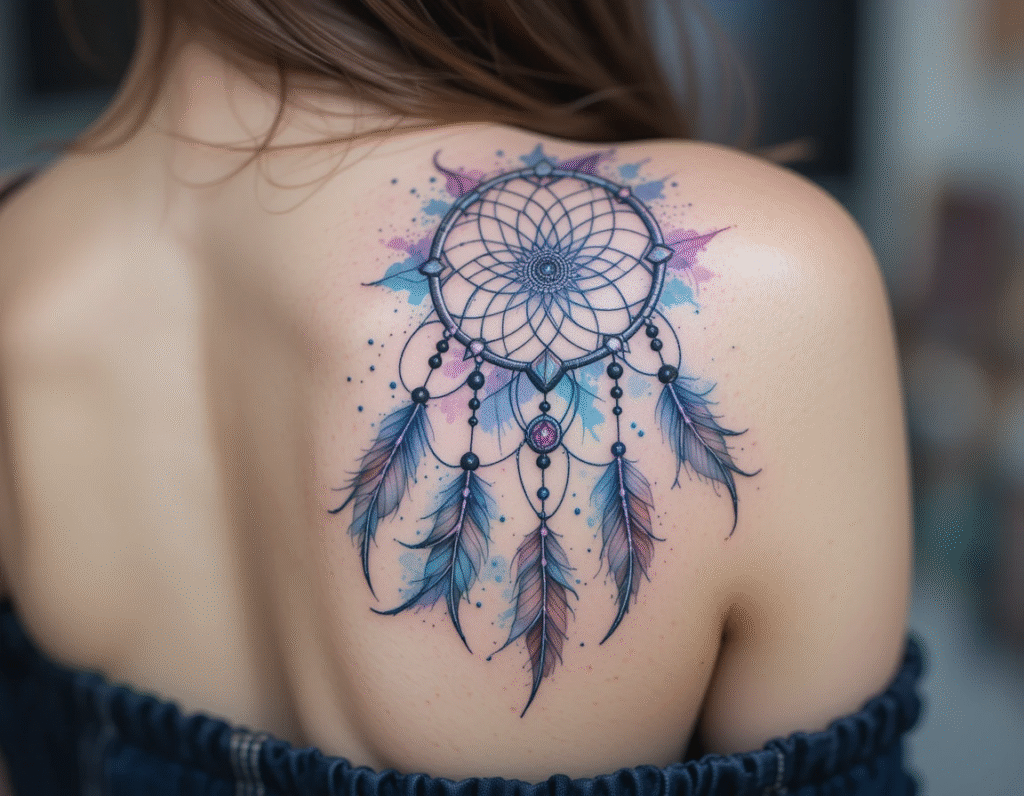
The Perfect Canvas: Shoulder Placement
The shoulder provides an ideal location for dreamcatcher tattoos for several compelling reasons:
Natural Flow: The curved shape of the shoulder mimics the organic movement of hanging feathers, allowing the design to follow the body’s natural contours beautifully.
Visibility Options: Shoulder placement offers versatility – easily shown off or concealed depending on clothing choices, making it perfect for both professional and personal expression.
Healing Advantages: The shoulder area typically experiences less stretching and friction than other body parts, promoting better healing and color retention for watercolor work.
Size Flexibility: Shoulders can accommodate both medium and large-scale dreamcatcher designs, providing enough space for detailed featherwork and expansive color washes.
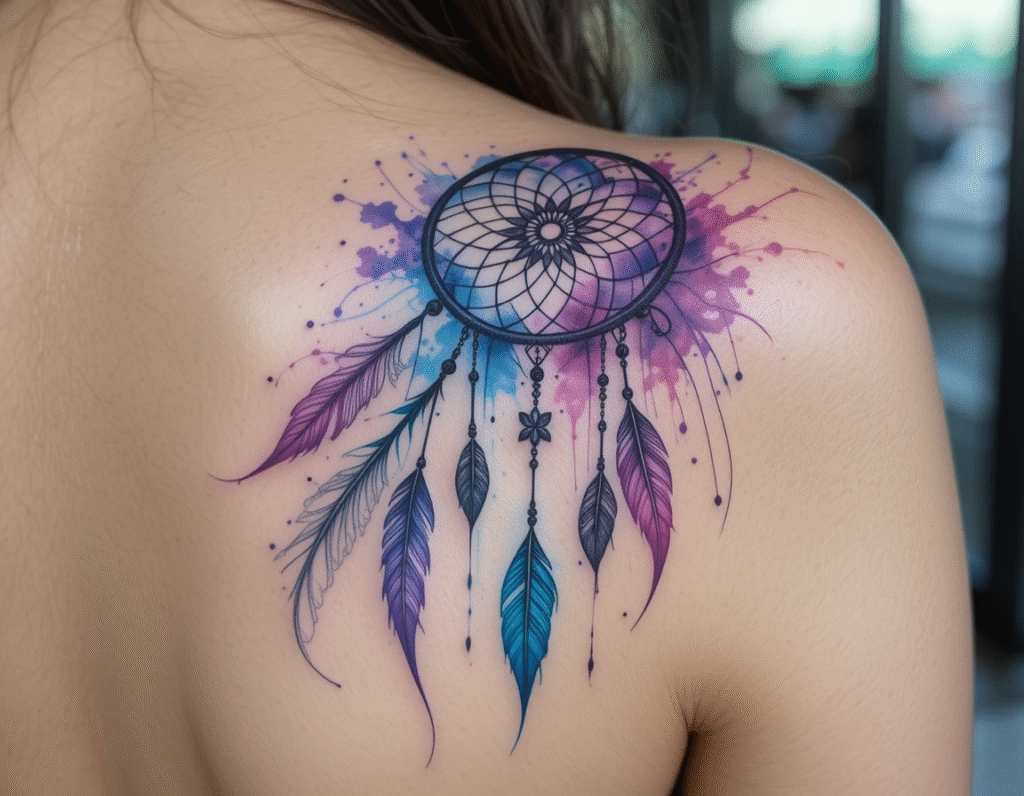
Color Psychology and Meaning
The color choices in watercolor dreamcatcher tattoos aren’t just aesthetic – they carry additional layers of meaning:
Blues: Represent tranquility, wisdom, and spiritual connection. The calming nature of blue tones enhances the protective qualities of the dreamcatcher symbol.
Purples: Symbolize intuition, mystery, and spiritual transformation. Purple hues add depth to the mystical aspects of dream filtering and protection.
Pinks: Convey love, compassion, and emotional healing. The softer pink tones balance the design and add feminine energy to the piece.
Color Transitions: The flowing movement between colors represents the fluid nature of dreams and the continuous cycle of protection the dreamcatcher provides.
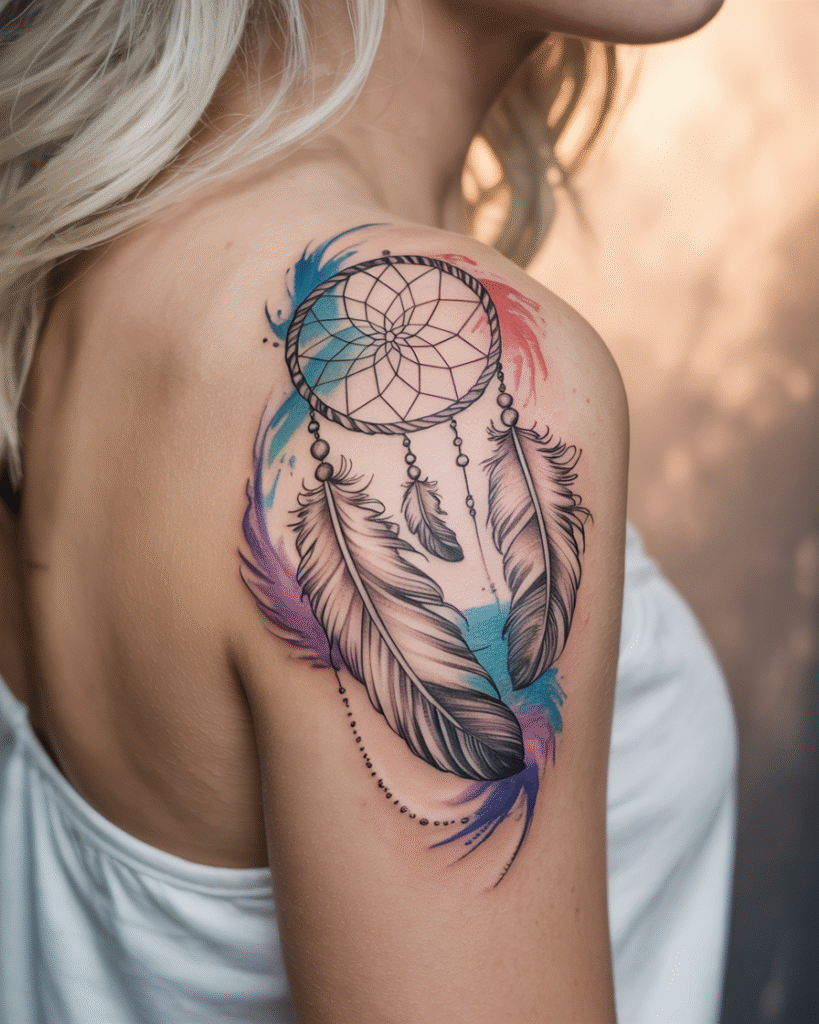
Technical Considerations for Longevity
Watercolor tattoos require special consideration for long-term appearance:
Ink Quality: Premium inks are essential for watercolor work, as they maintain vibrancy and resist fading better than standard alternatives.
Skin Tone Compatibility: The translucent nature of watercolor work means the technique works best on lighter skin tones where subtle color variations can be fully appreciated.
Touch-Up Planning: Watercolor elements may require touch-ups over time to maintain their vibrancy, and clients should plan for this maintenance as part of their tattoo journey.
Sun Protection: The delicate color work in watercolor tattoos makes them particularly susceptible to UV damage, making consistent sunscreen use crucial for preservation.
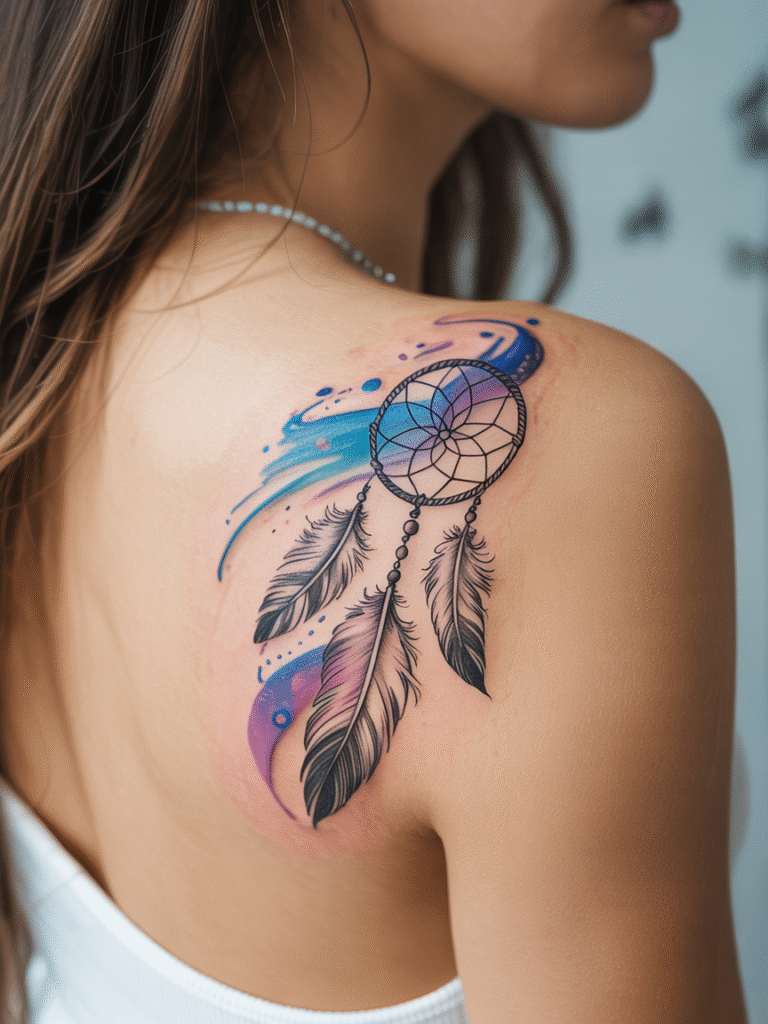
Feather Detailing: Artistry in Every Strand
The feathers in dreamcatcher tattoos showcase some of the most impressive technical work in the design. Each feather requires:
Individual Strand Work: Every barb of the feather is carefully rendered to create realistic texture and movement.
Shading Gradients: Subtle shading gives each feather dimension and prevents them from appearing flat against the skin.
Color Integration: Feathers often incorporate hints of the watercolor palette, creating cohesion between the realistic elements and the abstract color work.
Flow and Movement: The positioning and curve of each feather must suggest natural movement, as if caught in a gentle breeze.
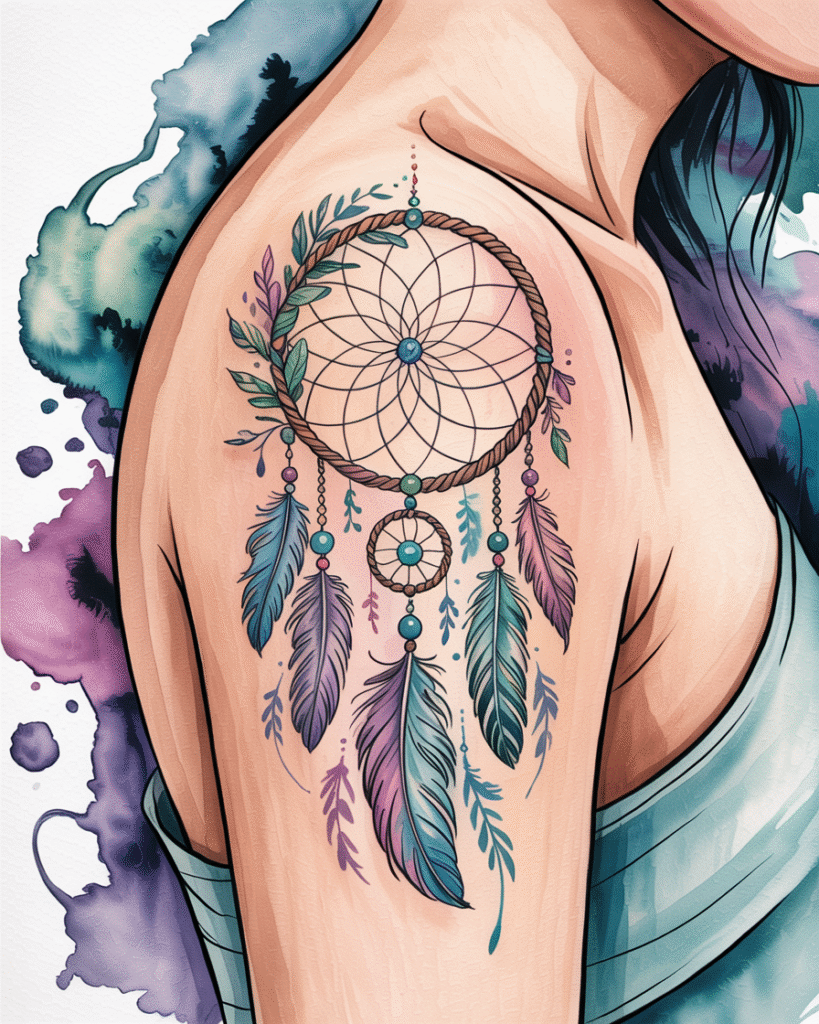
Customization and Personal Expression
While dreamcatcher tattoos follow traditional structural elements, there’s significant room for personalization:
Web Patterns: The intricate geometric patterns within the dreamcatcher’s hoop can be customized to reflect personal preferences or additional symbolic meaning.
Feather Styles: Different feather types can represent various aspects of the wearer’s personality or heritage.
Color Palette: While blues, purples, and pinks are popular, the watercolor technique can accommodate any color combination that holds personal significance.
Additional Elements: Small charms, beads, or secondary dreamcatchers can be incorporated to enhance the design’s personal meaning.
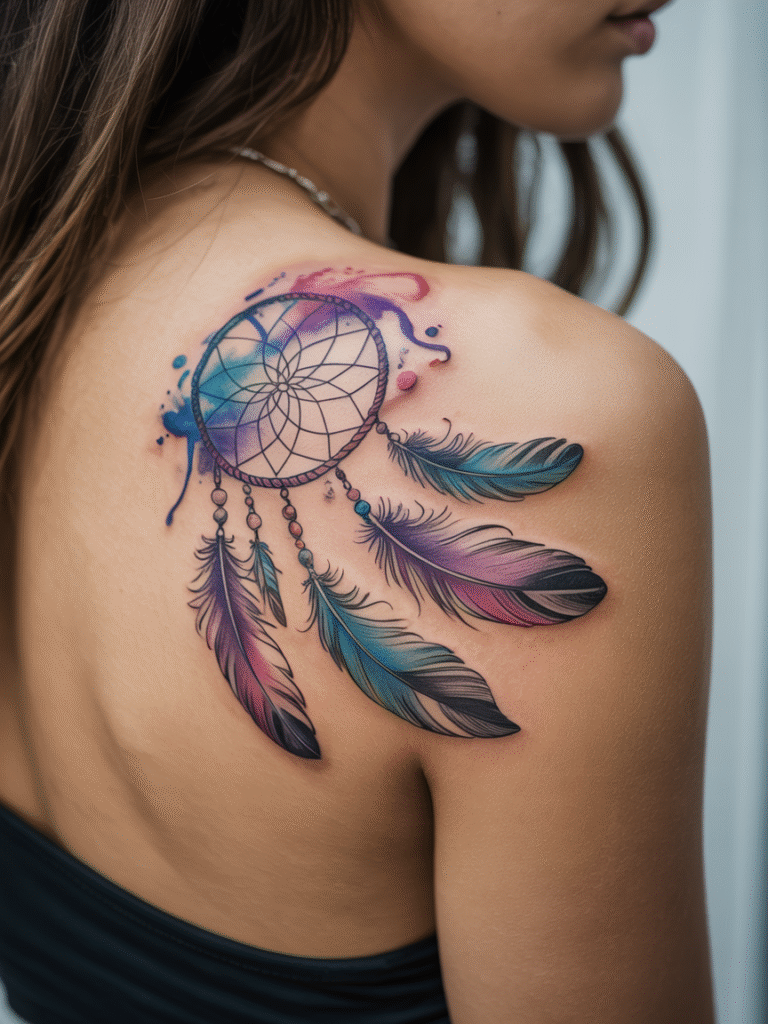
The Consultation Process
Given the technical complexity and permanent nature of watercolor dreamcatcher tattoos, thorough consultation is essential:
Design Development: Working with clients to develop a custom design that incorporates their personal meaning while optimizing for the watercolor technique.
Placement Discussion: Ensuring the chosen location will showcase the design effectively while considering the client’s lifestyle and professional requirements.
Aftercare Education: Watercolor tattoos require specific aftercare attention, and clients need thorough education on proper healing protocols.
Expectation Setting: Discussing the unique characteristics of watercolor work, including how it ages and potential future touch-up needs.
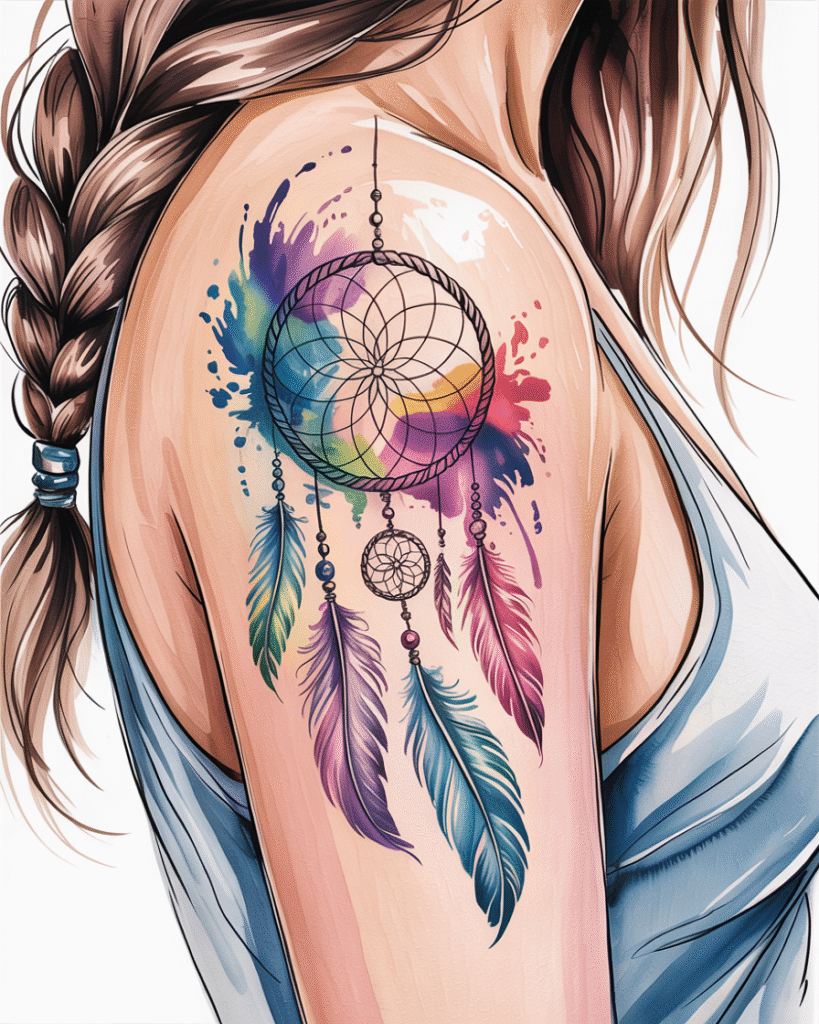
A Modern Take on Ancient Wisdom
Watercolor dreamcatcher tattoos represent the beautiful evolution of tattoo artistry – honoring traditional symbolism while embracing cutting-edge techniques. These pieces appeal to clients seeking both spiritual significance and artistic innovation, resulting in tattoos that are as meaningful as they are visually stunning.
The combination of protective dreamcatcher symbolism with the fluid beauty of watercolor creates pieces that feel both grounded in tradition and thoroughly contemporary. For those drawn to the idea of carrying ancient wisdom in a modern artistic form, watercolor dreamcatcher tattoos offer the perfect synthesis of meaning and beauty.
Whether chosen for their protective symbolism, their artistic appeal, or the personal connection to the filtering of life’s experiences, these tattoos represent some of the most sophisticated and emotionally resonant work in contemporary tattooing.

